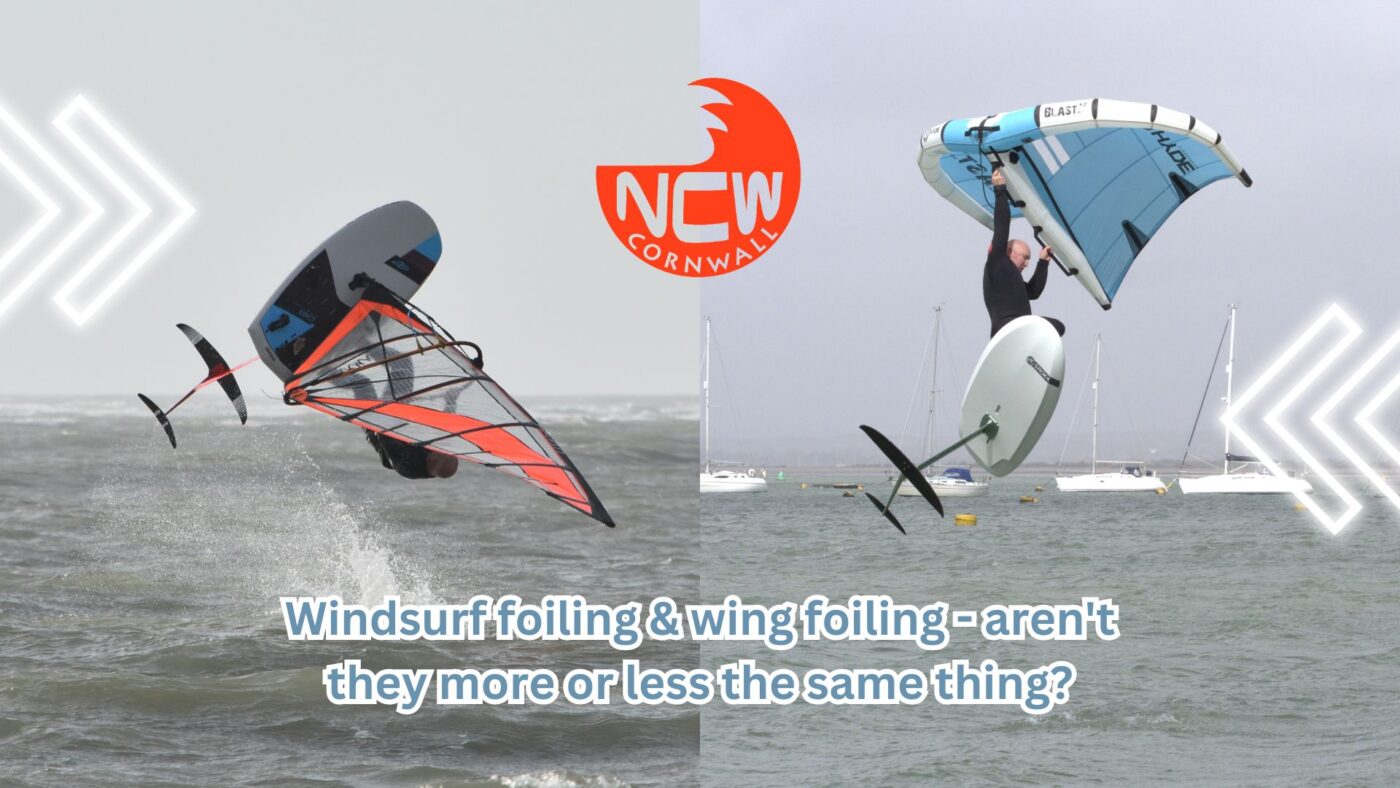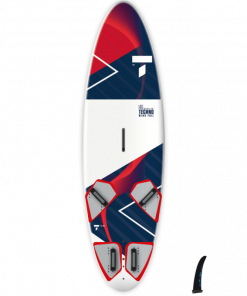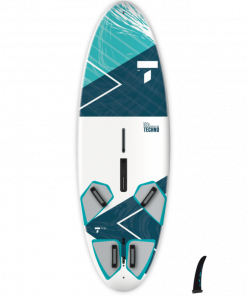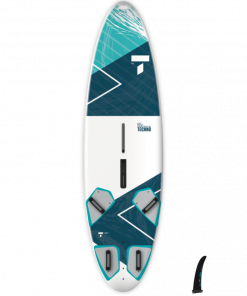Windsurf foiling & wing foiling look very similar. If you glance at the two pics below you might miss the power source in each image is slightly different. Whilst windsurf foiling and wing foiling disciplines rely on wind for propulsion windsurf foiling & wing foiling are two different beasts. To read an updated take on windsurf foiling & wing foiling check out this article.
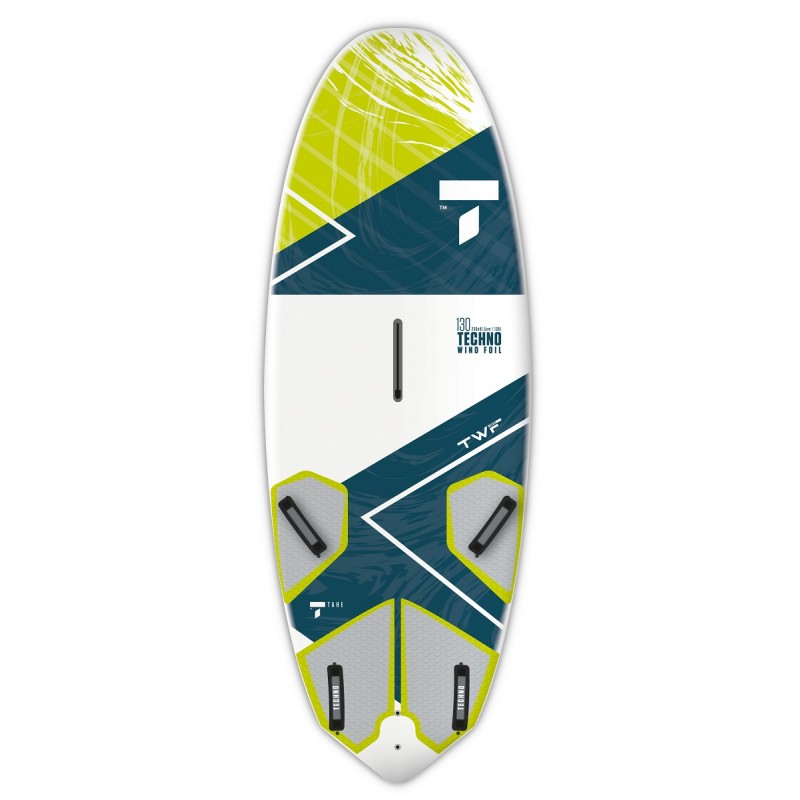
Tahe Techno Wind Foil 130L windfoil board
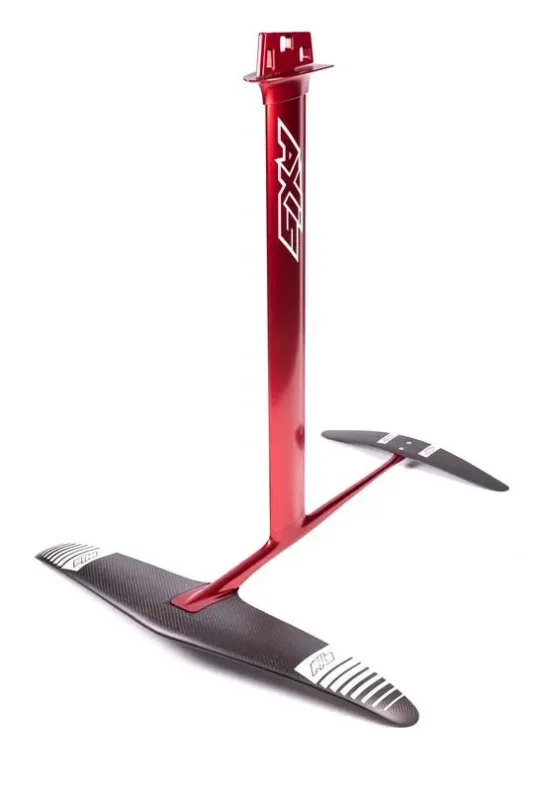
Axis Foils HA 900mm complete windsurf foil (windfoil).
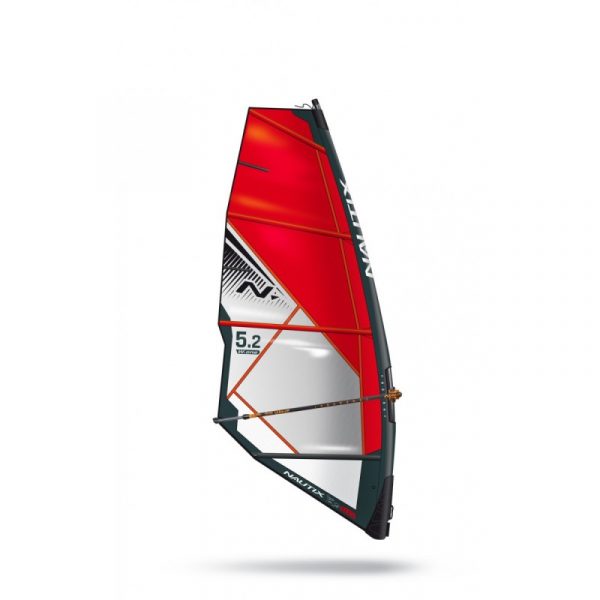
Nautix Windsurfing windsurf sails: 3.5m, 4.5m, 5.2m, 6.0m, 6.7m.
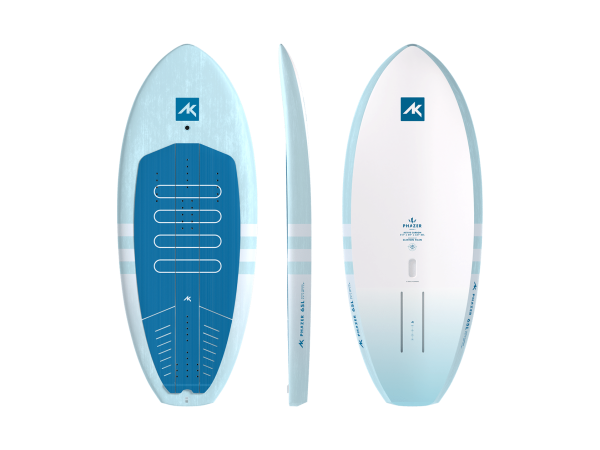
AK Phazer V4 foil board.
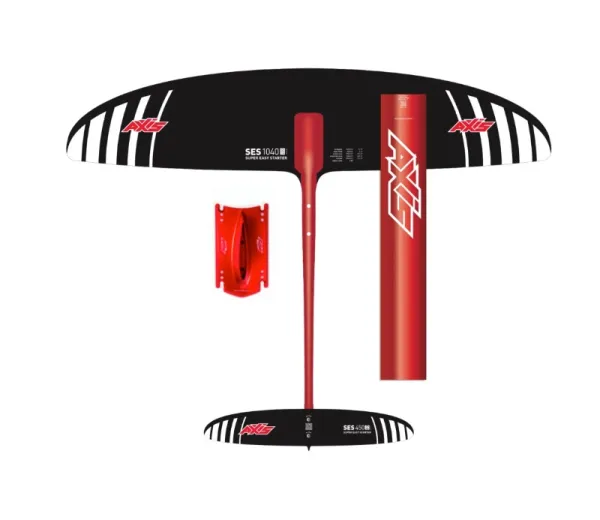
Axis Foils Super Easy Start (SES) 940 / 1040 complete foil
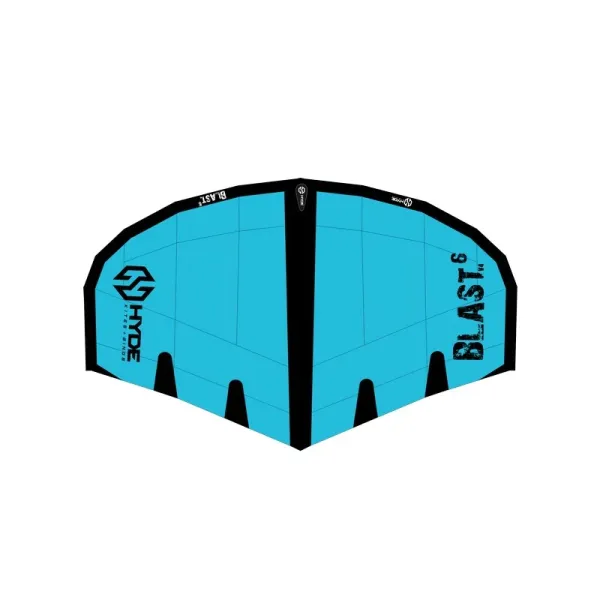
Hyde Blast foil wing 2024 3m / 4m / 5m / 6m
Shop wetsuits online. Wetsuits for windsurfing and other watersports in our online shop. Wing foiling wetsuits – shop our range online.
Windsurf foiling & wing foiling differences.
Windsurf foiling & wing foiling do have similarities. It’s true that skills from windsurfing cross over to wingin’ – as do those from kitesurfing and stand up paddle boarding to some degree. Arguably, however, wing wangin’ has more in common with windsurfing than the others, but still remains its own thing outright.
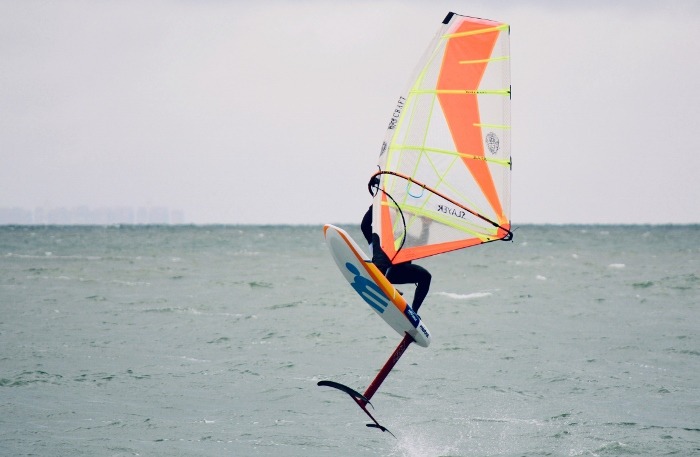
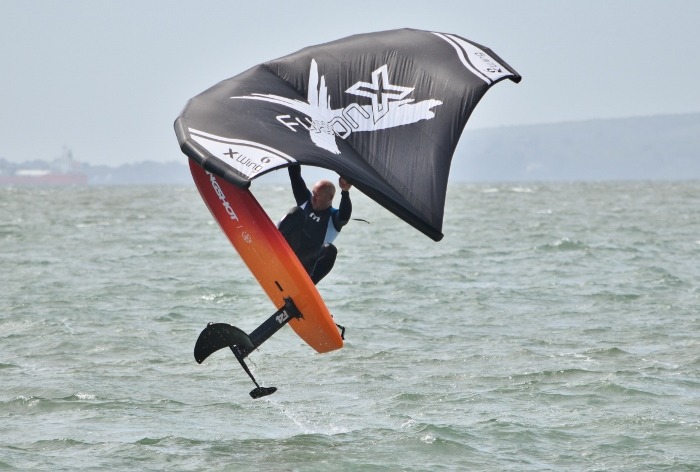
The wing wang thang vs a windsurf sail.
A big point with regards to wings compared to windsurf sails is the efficiency. As in, wings really aren’t that efficient at all. With a small amount of wind a windsurf sail reacts, powers the rider’s board up (whether on fin or foil) and propels everything forwards. Even small blows are enough to move windsurf set ups through the water fairly well.
Wings, in contrast, really don’t do this at all. Being inflatable ‘engines’ they’re prone to warping and bending when breeze puffs and getting on foil is a slightly different technique to that of riding with a mast, boom and sail.
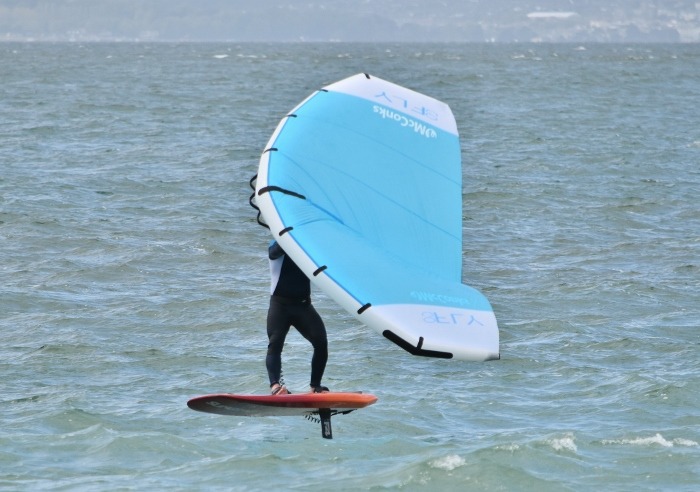
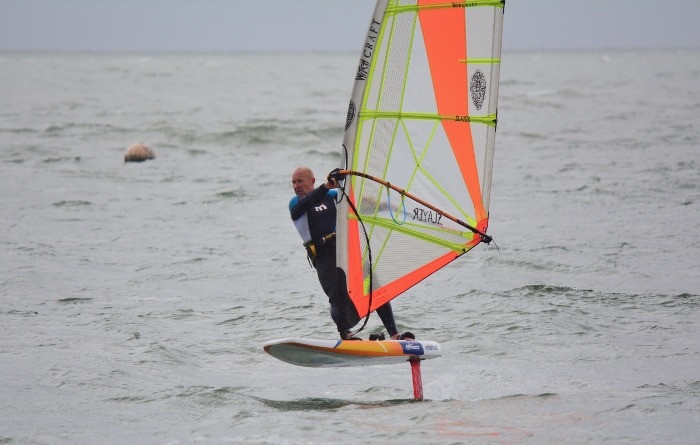
Sails are also horizontal to the wind’s direction. And being fixed to the board doesn’t give any kind of vertical sheeting angle. Sails do have a degree of manoeuvrability with the fact they can be rotated 360 degrees. Wings offer a much wider freedom of movement and it’s this you need to capitalise on when trying to fly.
The foiling technique.
With both windfoiling and wing foiling you’re aiming to pump the foil in tandem with your power source to lift and fly as early as possible. Unlike fin technique, however, foil pumping is an up and down motion. If you tried to push laterally against a foil it wouldn’t engage and you’d be perpetually stuck to the water.
Foil pumping technique is a little like ollying a skateboard. Riders should be aiming to rock backwards before reversing the process towards the board’s nose whilst aiming to slightly unweight. It needs to be fairly vigorous and done with your wing or windsurf sail also being pumped. The video below shows the foil pumping technique in motion.
In traditional windsurfing you can also pump your sail which means sheeting in and out (again, pretty vigorously – especially if you want to plane early). In contrast pumping a windsurf sail to foil up should be more of a rowing action as riders aim to time this with those ollying movements mentioned above.
The biggest difference with a wing is you also use a vertical pumping motion, pulling the wing down above your head, releasing and letting it raise before pulling down once again – this action repeated quickly and with effort. At the same time you should be pumping the foil. As you start to lift you can begin to drop the wing into a more lateral position reflective of how a windsurf sail sits when in use.
Windsurf manouvres vs windfoil manouvres.
Once foiling and in control, sustaining ride height and reacting efficiently to gusts, the next step is learning how to go round corners – or gybe if you will. This is where the efficiency of a windsurf sail vs the inefficiencies of a wing play out the opposite way. Check out the videos below for examples of both wing and windfoil moves.
To be a good windsurf foiler you need to have a fairly good grasp of windsurfing – at least to intermediate level. Wingin’ on the other hand needs no real prior experience which is why it’s so appealing to many. The wing isn’t as critical to sheeting angles as a windsurf sail, plus, the ability to depower so much means round bends (with a big, early lifting and gliding foil) is much easier to achieve. So much so that some wingers get this dialled in a few sessions. Windsurf foil gybing takes a little longer.
More about the depower.
Another appealing aspect of wing foiling is the ability to hold the wing with one hand and let rolling swell or waves propel you along on foil alone. This is called flagging and wingers who wave ride use their ‘engine’ as a form of towing onto waves. And you don’t need big waves either!
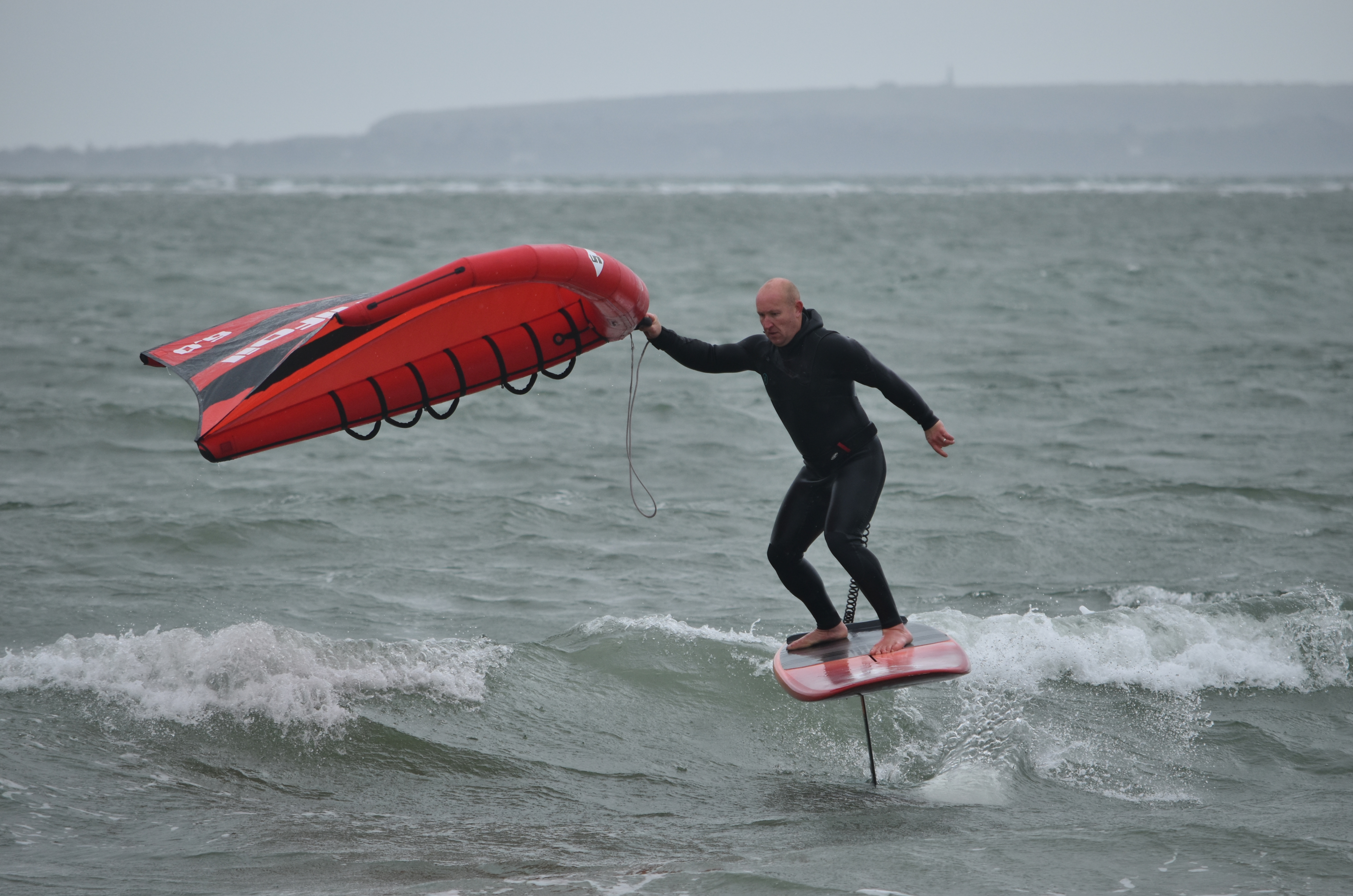
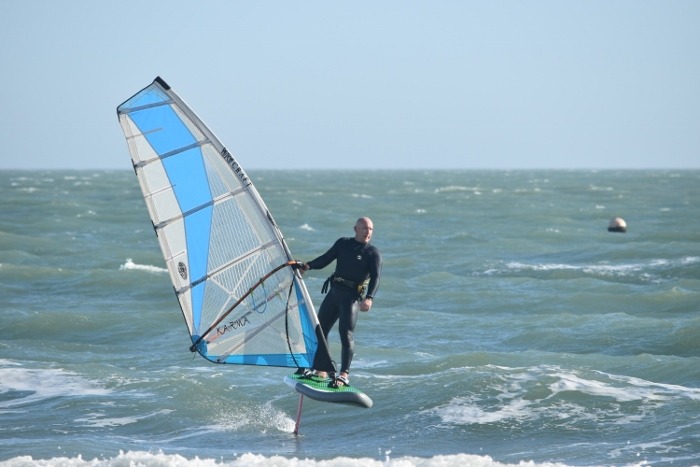
The perception is you can’t do the same thing with windsurfing foiling, which actually isn’t true (see above pic). You can depower your sail just as you would a wing by letting go and holding up by the boom’s clamp. The difference is your sail is attached to the board. Once riders get used to wave riding with their windsurf rig flagging in this fashion it becomes obvious you can use a sail as a method of towing just as you can a wing. But we appreciate it isn’t as obvious a drift surfing wingfoil style.
Other differences.
Speed is a noticeable one – especially when jumping between wing and windsurf foil disciplines. Windfoiling is much quicker than wingin’. Although the gap in 2024 is closing. This mainly due to (often) bigger, draggier foils being used with a wing. This is changing as more riders opt for thinner profiled, higher aspect foil wings but it’s not there yet.
Set up and pack down is also a bit different. A wing, being inflatable without any additional component parts, is simply pumped up and squashed down. Some windsurfers can actually rig a sail just a quick but most take their time so the perception is that it’s a longer winded process. The set up of foils and foil boards is just the same though.
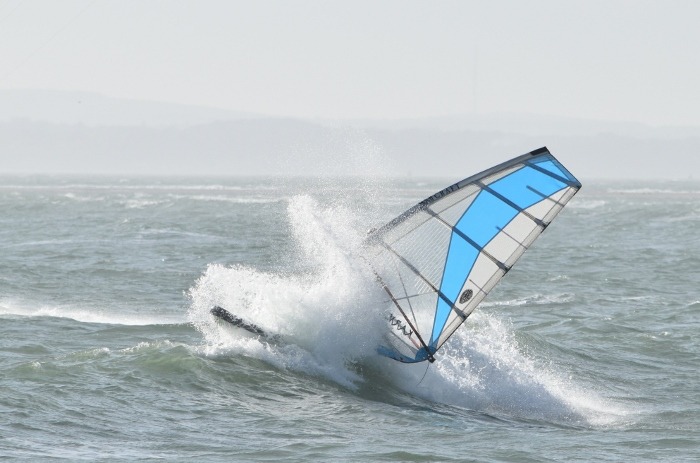
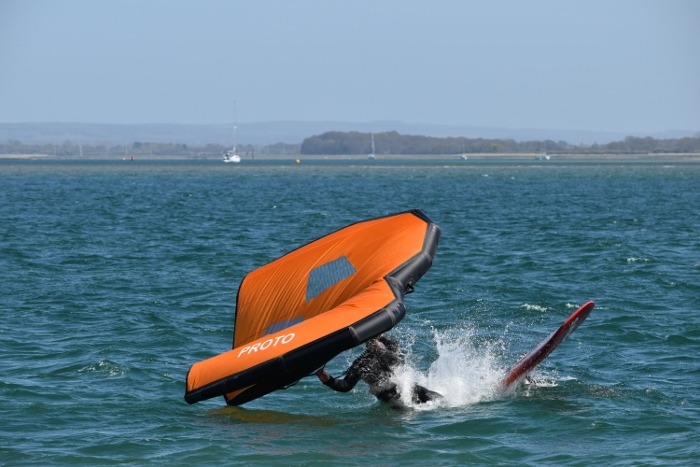
Wings, being filled with air, are also perceived as safer than windsurf rigs with hard parts. Although, if you’ve windsurfed for any length of time you’ll be mindful of what can go wrong and not be put off.
As you can see these are just some differences between wing foiling and windfoiling. Whilst they are comparable they’re very much their own disciplines and should be approached as such.

